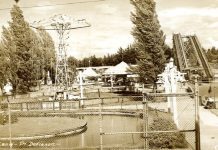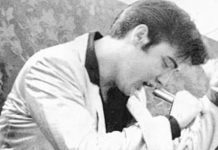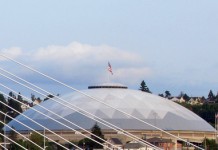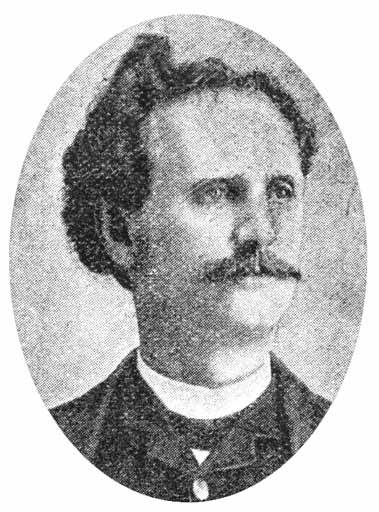By Eric Wilson-Edge
 I’m walking in search of history, in search of hot dogs and flags, hands over hearts and preliminary cheering. There’s a small piece of American lore hidden in the streets of Tacoma. I know the general area but finding it is proving to be difficult. Google Maps is lost and there’s almost no record of the thing’s existence.
I’m walking in search of history, in search of hot dogs and flags, hands over hearts and preliminary cheering. There’s a small piece of American lore hidden in the streets of Tacoma. I know the general area but finding it is proving to be difficult. Google Maps is lost and there’s almost no record of the thing’s existence.
The most frustrating part is that I know I’m close. What I’m looking for is between St. Helen’s Avenue and Broadway across from the Pantages Theatre. I find a Tully’s and a knick-knack store. I walk the same route over and over again with little success.
I catch a break twenty minutes into my quest. The mustard colored Bostwick Building is where it happened. I find what I’m looking for on the side of the Bostwick. Here is the plaque honoring Rossell G. O’Brien’s contribution to American culture.

O’Brien, an Irish immigrant, officially started the custom of rising for the national anthem.
John Keane answers the phone with a spirited greeting. His thick brogue makes him instantly more interesting. Keane is the Honorary Consul of Ireland for the State of Washington. The Ireland native is well-versed in his homeland and doesn’t mind sharing his knowledge.
Ireland is everywhere in Western Washington. From Keane I learn Redmond was formed by a man named Luke McRedmond. Marysville and La Conner also get their names from the Emerald Isle. David Denny, the first non-native settler of Seattle, is of Irish descent.
As for O’Brien, his impact is more broadly felt. At age 16, O’Brien joined the Illinois Infantry and fought in the Civil War. He came west in 1870. O’Brien served on the Olympia City Council and was mayor. He also founded the Washington State National Guard and served as its first commander.
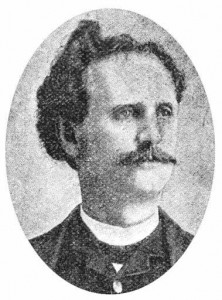
On October 18, 1893, O’Brien attended a meeting for the Military Order of the Loyal Legion. “He proposed a motion that when the Star Spangled Banner was being played that everyone should rise and that gentlemen not in military uniform should remove their hats,” says Keane.
According to Keane there was no set protocol concerning the national anthem. Some people stood, others sat. O’Brien’s motion passed and went to the Legion’s national headquarters where it was adopted.
“The Star Spangled Banner wasn’t made the national anthem until the 1930s,” says Keane. “It was a song that stirred the hearts of patriots but had no formal designation. O’Brien felt it should have a more formal treatment.”
In 1973 the US House of Representatives passed a resolution honoring O’Brien. The resolution said in part, “[O’Brien] is hereby recognized and honored for originating the custom or rising and standing with head uncovered during a rendition of the Star Spangled Banner, the national anthem of the United States.”
A handful of people walk past. No one seems to notice the plaque or its significance. I snap a few pictures and make my way back to the car. This isn’t life changing history but it’s certainly interesting. It’s even more interesting that it formally started here, in our own backyard.
























